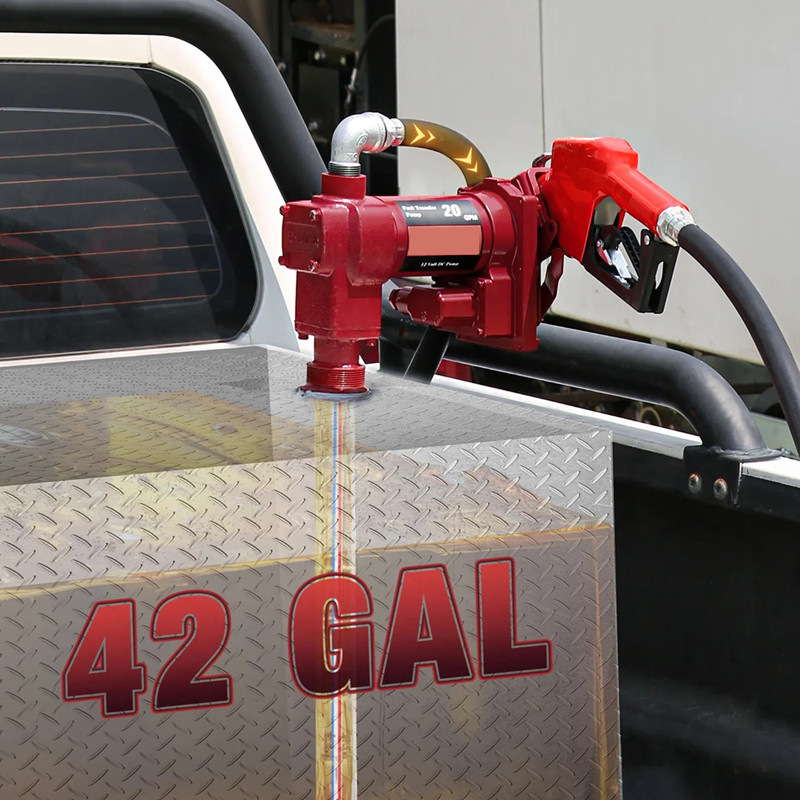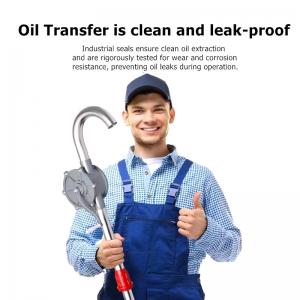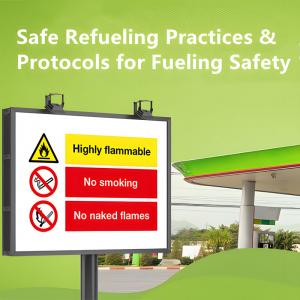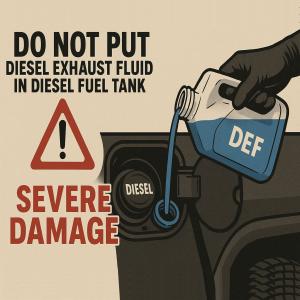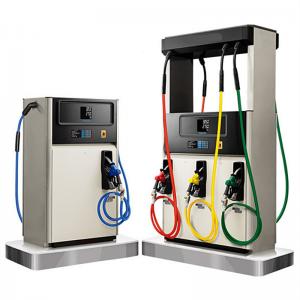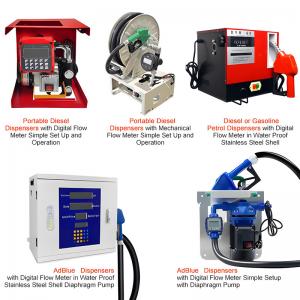How to clean out a fuel transfer tank?
Fuel Transfer Tank Cleaning Guide: Safety, Efficiency, and Compliance
As the demand for mobile fueling solutions grows across the logistics, construction, mining, and agricultural sectors, fuel transfer tanks have become indispensable equipment. These tanks require regular maintenance and cleaning to ensure fuel quality, extend equipment lifespan, and comply with increasingly strict environmental regulations. However, many lack the professional knowledge to safely and thoroughly clean a fuel transfer tank.
As a company specializing in fuel dispensing equipment, we understand the critical impact of fuel transfer tank maintenance on the entire fluid transfer system. Regular and thorough cleaning of a fuel transfer tank can:
-
Safeguard Fuel Quality: Prevent contaminants from polluting new fuel and ensure combustion efficiency.
-
Extend Equipment Lifespan: Reduce the wear and tear on the fluid transfer pump and nozzles caused by impurities.
-
Prevent System Failures: Lower the risk of clogged filters and stuck valves.
-
Ensure Regulatory Compliance: Meet maintenance requirements from organizations like OSHA and the EPA for fluid handling equipment.
The search terms "how to clean a fuel transfer tank," "fuel tank cleaning steps," and "removing sludge from the bottom of a fuel tank" show that users are actively seeking professional and safe cleaning guidelines.
This is a comprehensive guide to cleaning a fuel transfer tank, detailing the preparation, safety precautions, and specific steps to help you complete this important task safely and efficiently.
Key Concerns in Fuel Transfer Tank Cleaning
Users have several core concerns regarding fuel transfer tank cleaning:
-
"How to safely clean a fuel tank": This is the top concern. The flammable and explosive environment inside a fuel tank makes cleaning a high-risk job. Users need to understand proper ventilation, static electricity prevention, and personal protective equipment (PPE) to avoid fires, explosions, or poisoning.
-
"Efficiently remove sludge from the bottom of a fuel tank": The sludge, water, and sediment that accumulate at the bottom of a tank are a primary cause of poor fuel quality and equipment issues. Users want to find effective and efficient methods and tools to remove this debris, such as using a professional fluid transfer pump.
-
"Environmentally compliant cleaning methods": With growing environmental awareness, users are increasingly concerned with the proper disposal of waste oil and water generated during cleaning. They search for terms like "fuel tank cleaning waste disposal" and "eco-friendly cleaning agents" to ensure compliance.
These concerns collectively lead to one conclusion: cleaning a fuel transfer tank is not just a technical task; it's a systematic process that requires a balance of safety, efficiency, and environmental responsibility.
Preparation: Key Steps Before You Begin
Before starting the cleaning process, thorough preparation is essential to ensure a safe and smooth operation.
-
Empty the Tank: First, use a professional fluid transfer pump to completely empty all fuel from the tank. Ensure the pump's inlet is as close to the tank bottom as possible to minimize residue. Our products offer high-flow, strong self-priming fluid transfer pumps to ensure a thorough evacuation.
-
Ventilation and Inerting: This is the most critical safety step. Fuel vapors mixed with air are highly explosive. Before cleaning, open all access ports to ensure the tank is fully ventilated. In some high-risk scenarios, it may be necessary to inject an inert gas like nitrogen into the tank to lower oxygen concentration and eliminate explosion risks.
-
Safety Equipment Check: Ensure all personnel wear explosion-proof personal protective equipment (PPE), including anti-static workwear, goggles, respirators, and anti-static footwear. Inspect all tools to ensure they are explosion-proof or non-sparking.
-
Environmental Preparation: Set up warning signs in the cleaning area and keep unauthorized personnel away. Have fire-fighting equipment, such as fire extinguishers, on hand and place absorbent pads or a spill tray to contain any potential leaks.
Cleaning Steps: From Initial Rinse to Final Inspection
Once preparation is complete, you can begin the actual cleaning process.
-
Initial Rinse: Start by injecting a small amount of diesel or a specialized cleaning agent into the tank. Use our fluid transfer pump to circulate it internally, dissolving the sludge on the tank walls and bottom. This step can be repeated until most of the grime is removed.
-
Manual or Mechanical Cleaning: For stubborn residue, manual cleaning may be required. Personnel must strictly adhere to safety protocols, enter the tank, and use a non-metallic brush or a high-pressure washer (ensuring the washer and tank are properly grounded). Our fluid handling equipment can provide high-pressure cleaning solutions.
-
Waste Water Removal and Disposal: After cleaning, use a fluid transfer pump to extract all waste oil and water from the tank. This waste must be collected in designated containers and handled by a qualified environmental company. Do not dispose of it improperly to avoid violating regulations.
-
Drying and Inspection: After cleaning, use an industrial fan or natural ventilation to completely dry the inside of the tank. Once dry, personnel should re-enter to inspect the walls and bottom to ensure they are completely clean and to check for any signs of corrosion or damage.
Conclusion: The Importance of Regular Maintenance and Professional Equipment
Cleaning a fuel transfer tank is a highly specialized and risky task. Regular, standardized cleaning not only ensures fuel quality and extends the life of the tank and its accessories (such as Fuel pumps and Fuel nozzles) but also effectively prevents equipment failure and downtime caused by fuel contamination.
Our fluid handling equipment, including high-efficiency fluid transfer pumps and various professional Fuel nozzles, plays a critical role throughout the cleaning and maintenance process. Choosing high-quality equipment that meets explosion-proof and environmental standards is the foundation for a safe, efficient, and compliant fuel management system.
We are confident that by understanding the correct cleaning procedures and using professional equipment, you can not only ensure the purity of your fuel but also contribute to your company's sustainable development and environmental responsibility.
Frequently Asked Questions
Q: How often should I clean my tank? A: We recommend the following schedule based on usage intensity:
-
High-intensity use (daily operation): Deep clean every 3 months.
-
Medium-intensity use: Every 6 months.
-
Low-intensity use: At least once a year. You should also check the frequency of filter changes. If the filter's lifespan is significantly shortened, you need to clean the tank sooner.
Q: Can I use a regular hose to rinse the tank? A: Absolutely not. Ordinary water pressure cannot effectively remove sediment and could lead to:
-
Water residue causing microbial growth.
-
Incomplete cleaning accelerating equipment wear.
-
Failure to comply with occupational safety standards.
Q: How do I choose a professional cleaning service provider? A: Look for three key qualifications:
-
Do they have explosion-proof equipment certifications?
-
Do their wastewater treatment plans comply with environmental regulations?
-
Are their service personnel professionally trained (ask to see OSHA certifications)?
